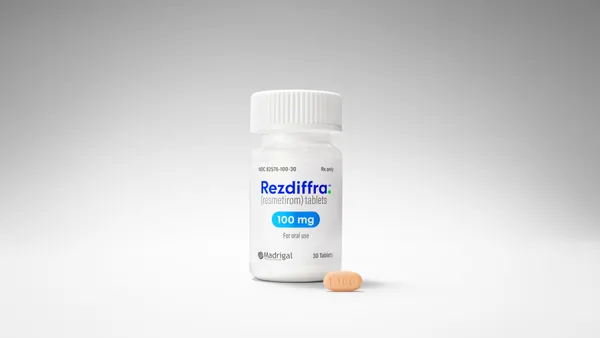40 September 2008 VIEW on Marketing PRODUCT LAUNCHES Less than a decade ago, biologics were prescribed for only rare genetic diseases. Now these novel therapies are used to treat a host of more common conditions, including cancer, diabetes, multiple sclerosis, and rheumatoid arthritis. In fact, over 200 new therapies and vaccines are currently on the market, and more than 400 products targeting over 200 diseases are in clinical trials. Alongside the significant increase in the number of available therapies is an actual translation into market success. Worldwide, one out of eight prescriptions today is written for a biologic product. These therapies have certainly become a dominant player in the pharmaceutical industry and have undoubtedly made their mark on the world. Organizations have thrust significant investments into the development and commercialization of biologic products to address the unmet needs of myriad patient populations and to fill gaps in product pipelines. For those companies and personnel who shift efforts from traditional, smallmolecule products to more complex biologic products, there is a steep learning curve to climb, primarily because of dissimilarities between the two types. Biologics are substantially different from traditional therapies in multiple facets: 1) they are larger molecules and are often composed of a mixture of entities, 2) they require a more difficult administration through infusion or self injection, and 3) they can cost up to 20 times more than nonbiologic treatments. These distinct differences have given way to new questions among traditional key stakeholder groups — patients, prescribers, and payers — compelling brand managers to discard portions of traditional product launch strategies for new, tailored plans aimed at addressing the unfamiliarities and unique challenges associated with the adoption of biologic products. This article will examine the new challenges biologics present for key stakeholders, and the resulting implications for brand managers preparing for product launch. Patients The novelty of biologic products has often led to one of two reactions among various patient populations. For one, biologic products make it possible to treat medical conditions for which there are no alternative therapies and are therefore highly attractive for patients. However, for those biologics that simply provide a different mechanism of action from a traditional pill therapy, patients may be apprehensive to switch products. Patients considering such products may be discouraged because of the higher cost of treatment and the learning curve associated with the new method of administration, or they may perceive that their disease has become more severe. This apprehension is particularly evident in patients living with chronic illnesses such as asthma, who have experienced ongoing treatments that provided some benefit but did not have a substantial effect on their quality of life. For example, people living with asthma have for years relied on inhalers that they learned to use through simple training at their physicians’ offices, and that they could easily purchase at a local pharmacy. The inhalers provided some relief, thus patients may have been apprehensive about the need to switch to a more complex biologic product. Implications for Brand Managers With multiple treatments for a single disease state now available and variable cost and administration for each product, patients must have at their fingertips the resources to help them gain a comprehensive understanding of their disease and how a product will best treat it. This is particularly true for patients considering biologics, since they are relatively new to many patients and their complex nature can leave many unanswered questions. It is critical to the success of a biologic’s launch campaign that brand managers focus specific tactics on educating and empowering patients, who are now more than ever seeking out information that will provide them with the tools needed to offer more valuable input in their own treatment plan. Brand managers can use a number of tactics to disseminate information about the product and disease state to patients. For one, brand managers can create branded educational materials that communicate the product’s mechanism of action, mode of administration, desired results, key attributes, and reimbursement issues. They can also use both print and television advertising to increase product awareness and to drive consumers to their websites, where detailed educational information can be housed. In addition, brand managers can create branded or nonbranded educational programs or online tutorials to help answer questions about issues such as reimbursement. As many patients now turn to websites or blogs to learn more about healthrelated issues and treatments, brand managers should utilize this space to proactively disseminate key product messages and to refute any inaccurate information posted online or resulting negative viral marketing that could unfairly tarnish the product’s image. Campbell Alliance Biologic Product Launches Considering Patients, Prescribers, & Payers By their nature, biologics are complex; the vast dissimilarities between these products and traditional therapies present new challenges for key stakeholders that brand managers must consider when planning for product launch. Fahti KhosrowShahi Senior Vice President, Brand Management Practice Emily Hua Vice President, Brand Management Practice VIEW on Marketing September 2008 PRODUCT LAUNCHES In addition, brand managers responsible for biologic products — especially those in less common or very serious disease states — should think about how they can appropriately work with patient advocacy groups. Typically, a good advocacy strategy will help to increase general awareness of the disease state, while simultaneously providing educational benefits or other informational resources to patients and providers. Efforts in this area are typically unbranded, focusing instead on the disease state itself. Prescribers Although prescribers are eager to provide effective treatment options for patients, the new methods of administration and complex reimbursement and purchasing requirements associated with a biologic versus traditional pill therapy can be somewhat overwhelming, particularly if the product’s value proposition is not clearly defined or communicated. Physicians and their staff must learn how to administer the product and must ensure that their office has the appropriate equipment to safely administer the treatment. Prescribers also must be fully educated on purchasing issues related to biologic products, which typically must be obtained from specialty pharmacies, rather than traditional retail pharmacies. In addition, they must understand the differences in the reimbursement process for a biologic compared with a traditional pill therapy. Implications for Brand Managers Since there is a steep learning curve to overcome and a significant investment of resources required to adopt a biologic as the standard of care, it is imperative that physicians fully understand the value of the product, as well as the attributes that differentiate it from others on the market. Most prescribers now have a basic understanding of biologics administration and reimbursement issues, allowing brand managers to focus their efforts on disseminating key messages about their products. In order to communicate key issues as well as product attributes, brand managers should employ a skilled specialty sales force. This sales force must be designed to target specialty physician segments, often for niche diseases, that are much smaller than primary care physician segments treating patients with more common conditions. For example, a traditional sales force campaign may target 80,000 primary care physicians, while a biologic product campaign may target 8,000 oncologists. Frequency is the goal of a traditional campaign, whereas more indepth interactions from a highly targeted, clinically educated force that is knowledgeable of administration, reimbursement, and purchasing issues is the focus of a specialty sales force campaign for bio logics. Additionally, retaining the support of key opinion leaders (KOLs) for a product and its messaging is extremely beneficial in the commercialization of a biologic product. Specialty physician groups who are often targeted for biologic marketing campaigns, like rheumatologists, tend to be smaller in number and therefore more likely to follow the lead of top national researchers or physicians. KOL support, although beneficial, is not quite as critical for products prescribed by primary care physicians for more common diseases. Payers Biologics, which represent the majority of specialty drugs, are increasingly used to treat more common conditions in the US. In 2006, spending on these specialty drugs reached $54 billion, or 20% of total pharmaceutical expenditures. These products are expected to continue their growth trajectory, with spending predicted to reach $99 billion by 2010. For these more common conditions, current estimates reveal that the average annual treatment costs for biologic drugs can be 10, 15, or even 20 times higher than those of most nonbiologic drugs, prompting government and private payers to weigh the cost of biologics against their benefits. Although many patients suffering from chronic illnesses will experience better long term outcomes and a significant improvement in disease management as a result of treatment with a biologic, some products are targeted only at increasing a patient’s life span by a few months in the latter stages of a disease. Implications for Brand Managers As biologic products have become more prevalent and led to higher expenditures, payers have begun scrutinizing these products more than ever before. To secure the desired levels of market access and reimbursement, brand managers must make the early development of their payer strategy a high priority within the overall launch strategy. For years, managers of traditional small molecule products have had to work hard to understand the needs and perspectives of payers regarding the disease states in question and their products. They have used this understanding to develop compelling payer focused messages and value propositions that clearly communicate the clinical and economic benefits of their products. They have also had to develop effective pricing and contracting strategies to ensure market success. At the same time, biologic products, especially those treating rare or life threatening conditions, have easily secured market access and reimbursement. Now, times are changing. Managers of biologic products must adopt the same approaches to payers as their small molecule counterparts. Consequently, even as early as phase 2 of clinical development, brand managers should begin thinking about how they will address the payer market. They must invest in research to learn how payers view the disease state, the available therapeutic alternatives, and their own target product profile. They should work to develop compelling, payer focused clinical and economic value propositions while also using analytical rigor to develop a pricing strategy. In addition, companies need to address a number of key questions to determine if contracting makes sense and, if so, with whom and how to contract. Conquering Biologic Product Launches By their nature, biologics are complex; the vast dissimilarities between these products and traditional therapies present new challenges for key stakeholders that brand managers must consider when planning for product launch. The biggest challenges, however, often reap the best rewards. If brand managers can demonstrate that their products produce clear and relevant benefits, they can count on the strong support of patients, prescribers, and payers. CAMPBELL ALLIANCE, Raleigh, N.C ., is a management consulting firm specializing in the pharmaceutical and biotechnology industries. For more information, visit campbellalliance.com. PATIENTS # Educate patients about the disease state # Empower patients with information about treatment options # Use online resources to educate patients about your product and counter misinformation # Develop an appropriate strategy for working with advocacy groups PRESCRIBERS # Ensure that the sales force is properly trained and deployed to sell the product # Educate physicians about why your product is different and when it is used most appropriately # Provide resources to help physicians with complex issues associated with administration, reimbursement, etc. # Develop a sound key opinion leader (KOL) strategy PAYERS # Understand the needs and perspectives of payers # Develop effective clinical and economic value propositions # Invest significant analytical rigor into the pricing strategy # Determine whether contracting is needed and appropriate Key Considerations for Brand Managers
An article from


Biologic Product Launches Considering Patients, Prescribers, & Payers
Filed Under:
Commercialization









